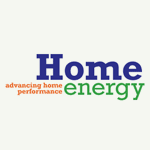Ultraviolet (UV) light is a very effective antiseptic that, if intense enough, and if in the right range of wavelengths, and if exposure is long enough, can kill most waterborne bacteria and other biological contaminants. However, it is not very effective against tough, hardy protozoan cysts.
We do not strictly control Google ad content. If you believe any Google ad is inappropriate, please email us directly here.
What is UV Light?
UV light is a form of electromagnetic radiation. On the electromagnetic radiation scale, it’s between visible light and x-rays. For controlling germs, UV light with frequencies in the abiotic region (non-life-supporting range) of 250 to 260 nanometers (nm) is used. As it turns out, UV can be effective against many microorganisms, such as yeast, mold, bacteria and viruses. And besides killing, UV increases the rate of mutation, chromosomal aberration and changes in cellular viscosity. UV also affects such vital processes as respiration, excitability and growth.
How do UV-Light Purifiers Work?
It seems that the radiation is actually absorbed by the organisms’ cellular nucleic acid, or some component of it. This, in turn, alters their DNA (chemicals with reproductive information) which can eventually kill microbes. Those hardy enough may only be damaged or deactivated. Sometimes, they can reactivate (repair) themselves when sunlight reaches them, or in other cases, when no light reaches them at all.
Other factors are important in UV purification effectiveness as well. As you might expect, UV light is not going to be successful if the water is cloudy or carries too many suspended particles. That’s because these types of water conditions will disrupt and scatter the radiation. Saying all this, ultraviolet-light purifiers can work effectively for both private individual wells and for water stored in cisterns (holding tanks) — if you realize their limitations. In a nutshell, what you need to remember is that UV purification has germicidal (killing) action on most waterborne microbes — but not cysts — and it has no effect on other contaminants that could be in your water. For example, it can’t adsorb dissolved gases or strain out sediment. You’ll find that they come in both whole-house units and point-of-use models. Incidentally, point-of-use UV-light purifiers are commonly used in conjunction with reverse-osmosis units.
Product Care
Maintenance is important if you opt for a UV-light unit. The lamps they use (such as low-pressure mercury-vapor lamps) must be kept clean. They’ll also need to be replaced regularly. (Because UV lamps tend to degrade rapidly, they’re actually rated as if they had already been operating for 100 hours.) It’s probably best to replace the lamp before it burns out to make sure it’s still functioning optimally.
From Creating a Healthy Household: The Ultimate Guide For Healthier, Safer, Less-Toxic Living, © 2000 by Lynn Marie Bower. Used by permission.
HHI Error Correction Policy
HHI is committed to accuracy of content and correcting information that is incomplete or inaccurate. With our broad scope of coverage of healthful indoor environments, and desire to rapidly publish info to benefit the community, mistakes are inevitable. HHI has established an error correction policy to welcome corrections or enhancements to our information. Please help us improve the quality of our content by contacting allen@healthyhouseinstitute.com with corrections or suggestions for improvement. Each contact will receive a respectful reply.
The Healthy House Institute (HHI), a for-profit educational LLC, provides the information on HealthyHouseInstitute.com as a free service to the public. The intent is to disseminate accurate, verified and science-based information on creating healthy home environments.
While an effort is made to ensure the quality of the content and credibility of sources listed on this site, HHI provides no warranty - expressed or implied - and assumes no legal liability for the accuracy, completeness, or usefulness of any information, product or process disclosed on or in conjunction with the site. The views and opinions of the authors or originators expressed herein do not necessarily state or reflect those of HHI: its principals, executives, Board members, advisors or affiliates.








